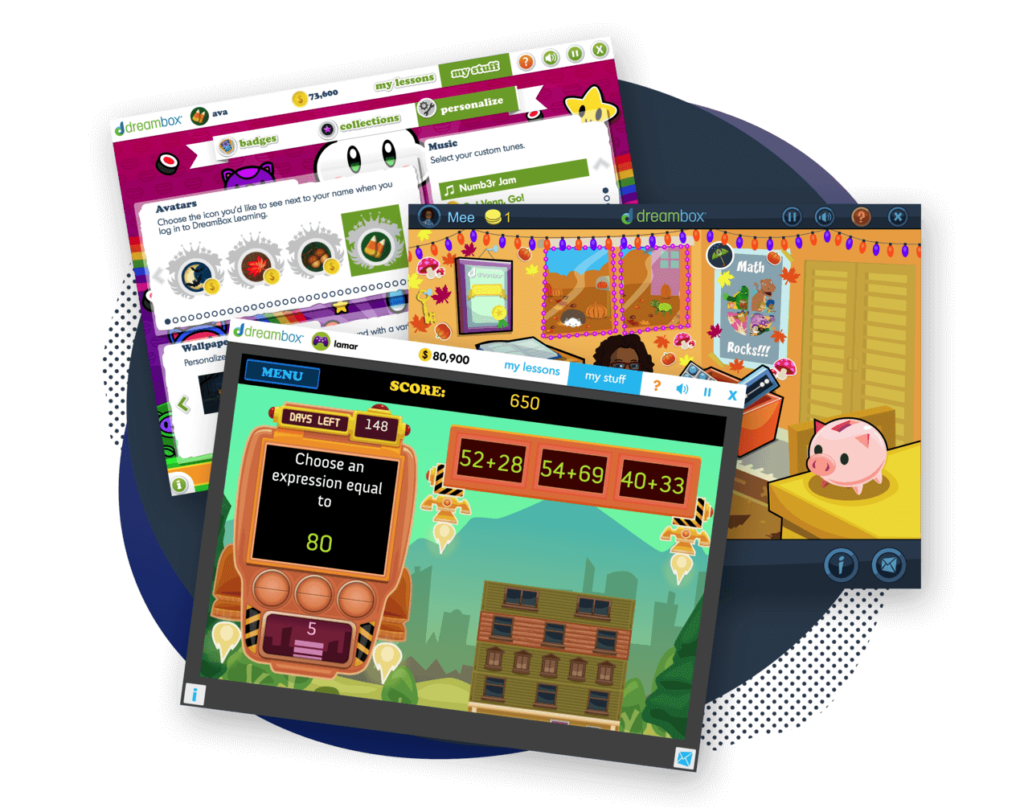What is Probability in Math?
Let’s make the numbers make sense.

Author
Tess Loucka
Published:
March 2025
Key takeaways
- • Probability is the calculation of how likely certain events are to happen.
- • The formula for the probability of an event is the number of favorable outcomes divided by the number of total possible outcomes.
- • Probability can be used in various areas of life to make educated predictions about events and their outcomes.
Picture this—you’re playing a card game with your friends and whoever has the better hand wins. Your friend’s hand is pretty good, but yours is better. How? Probability!
Knowing how to calculate probability is practically a superpower that helps predict potential events. Is the next card you pick up more likely to be a face or number card? What are the odds that your friend has all the aces? How likely is it that you’ll pick up another spade?
Probability helps answer these questions, giving you an edge in any game you play. But how does probability work, and how can you calculate it?
What is Probability?
So, what is probability in math?
To understand probability, we must know how to define probability in math first. Probability is the branch of mathematics and statistics that examines the likelihood of events.
Probability is always represented by a number between 0 and 1, with 0 meaning the event is impossible and 1 meaning the event will definitely happen.
For instance, when you flip a coin, the probability of landing on either heads or tails is 1 (since one of those outcomes must occur). The probability of the coin landing on neither is 0 (since that’s impossible).
Probability Formula
The probability formula says that probability is equal to the number of favorable outcomes out of the number of total possible outcomes:
Probability of an event to happen p(E) = number of favorable outcomes / number of total possible outcomes
Let’s put this formula to the test with an example:
Molly rolls a 6-sided die. What is the probability the die lands on a 4?
In this question, there are a total of 6 possible outcomes since Molly is rolling a 6-sided die. Only one of them is the favorable outcome—rolling a 4.
Using the probability formula, we put the number of favorable outcomes in the nominator, and the total number of outcomes in the denominator:
p(E) = ⅙
That means, there is a ⅙ chance that Molly rolls a 4.
Something important to remember with probability is the difference between the words “and” and “or.” Let’s say you roll a 6-sided die two times. The probability that you roll a 1 AND a 3 is ⅙ x ⅙ = 1/36. However, the probability that you roll a 1 OR a 3 is ⅙ + ⅙ = 2/6 = ⅓.
Remember, “and” means multiplication while “or” means addition.
If probability in math still seems complicated, don’t worry! Practice makes perfect. For more instruction, examples, and practice problems, check out DreamBox’s math program. It’s a great way to structure your learning outside the classroom.
Table of contents
Get help with math with DreamBox!
Turn math into playtime with DreamBox Math
DREAMBOX MATH
Get started for FREE today!

Probability Real Life Examples
The probability meaning in math can be applied to the world around us. It’s not just numbers on a page or in a calculator but an insight into how life works. Let’s talk about real-life applications of probability, broken down into five common categories.
Dice Roll Probability
Dice are used widely in board games, and probability explains the likelihood of rolling specific numbers.
When rolling a 6-sided die, there are 6 possible outcomes, each equally likely to occur. Rolling one specific number is only 1 of the 6 possible outcomes, therefore, the probability of rolling any specific number on a 6-sided die is ⅙.
Coin Toss Probability
A coin flip has two outcomes: heads or tails (since it is extremely rare for a coin to land on its edge, we are not considering that here).
What is the probability of one tossed coin landing on heads?
Well, out of two total possible outcomes (H or T), there is only one favorable outcome. Therefore, the probability of a coin landing on heads is ½.
If we flip the same coin two more times, to find the probability of getting heads all three times, we simply have to multiply ½ three times: ½ x ½ x ½ = ⅛.
Card Drawing and Card Game Probability
The standard deck of cards contains 52 cards divided into 4 “suits”—clubs, spades, hearts, and diamonds.
Each suit is made up of 13 cards. The clubs and spades cards are black while the hearts and diamonds cards are red.
The 13 cards in a suit are an ace, 2, 3, 4, 5, 6, 7, 8, 9, 10, jack, queen, and king. The jack, queen, and king cards are called face cards.
There are many different ways a person can draw a card from a standard deck, but some of the most common card-drawing probabilities are:
- The probability of drawing a card from a specific suit. Ex. p(diamonds) = 13/52 = ¼
- The probability of drawing a certain number. Ex. p(6) = 4/52 = 1/13
- The probability of drawing a face card. Ex. p(face card) = 12/52 = 3/13
- The probability of drawing a red card. Ex. p(red) = 26/52 = 1/2
What is the probability Amanda draws one face card, returns the card to the deck, and then picks a 7?
Well, the probability of choosing a face card from a 52-card deck is 3/13. The probability of picking a 7 card is 1/13. Let’s multiply these together:
3/13 x 1/13 = 3/169
So, the probability of Amanda drawing a face card and then a 7 is 3/169.
Weather Forecasting and Natural Disasters
Meteorologists, or weather scientists, use advanced technology and models to predict weather events and incoming natural disasters.
When you turn on the weather channel or look at the weather app on your phone, you’ll often see phrases like “30% chance of rain” or “expected precipitation.” These are real-life examples of probability in action.
Investing
Investing is another real-life example of probability—and it’s high-stakes too! Investing involves buying stocks in companies and hoping the stocks gain value.
Smart investors use past stock performance, current trends, and other factors to choose stocks with the highest probability of gaining value with the smallest risk.
Types of Probability
There are four main types of probability, each with distinct characteristics and applicability.
Classical Probability
This is the probability we’ve been talking about! Classical probability is based on events that are equally likely to happen, such as rolling a number on a 6-sided die or flipping a coin.
Empirical Probability
Also called experimental probability, this type of probability is based on data collected from events that have already happened.
Subjective Probability
Subjective probability is based on personal beliefs or expectations rather than mathematical calculation. When you ask a football fan about whether their favorite team will win the next game, their prediction would be an example of subjective probability. It is based on personal knowledge and experience.
Axiomatic Probability
Axiomatic probability is less a type of probability and more a framework to help create accurate predictions. These are the rules of probability (some of which we’ve already talked about!), no matter the method used.
Start Your Free Trial
See how DreamBox can help with math by signing up for a free trial today.
No credit card required!
Probability Tree Diagram
Just like a family tree shows relatives and their relations to each other with lines and arrows, a probability tree diagram visually represents outcomes!
The diagram starts with an event, like flipping a coin. It then uses branches (lines) to connect the event with its possible outcomes, such as landing on heads or tails. The probability of each outcome is written on the branch connecting it to the event.
Let’s take a look at this probability tree diagram:
*insert graphic of a diagram demonstrating the outcomes of rolling a 6-sided die*
This diagram shows the probability of the outcomes of rolling a 6-sided die and flipping a coin. There is a ⅙ chance that the die lands on any one number, and there is a ½ chance that the coin lands on heads or tails.
The specific outcome of both events (rolling the die and flipping the coin) is 1/12 because ⅙ x ½ = 1/12.
Probability Practice Problems
Q.1
What is the probability of rolling two 6-sided dice and getting a sum of 6?
Quiz Complete!
You got 0 out of 5 questions correct.
Conclusion
Knowing how to find probability is one of the most important mathematical skills students learn in school because it has many applications in real life! Whether you become a meteorologist and make weather predictions, trade stocks on the stock market, or play a card game with friends, understanding probability will set you up for success.
Take at home math practice to the next level
Empowering parents and educators to make math practice more impactful. Plus, your kids will love it.


